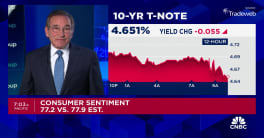Buoyed by the first reversal in the unemployment rate in 15 months, markets are up almost 2% on Friday, which will give the benchmark S&P 500 its fourth consecutive weekly gain.
Just after 1:30 pm, the S&P is leading all indexes with a 1.91% advance to 1,016, while the NASDAQ is trading 1.89% higher at 2,010, and the Dow is up 1.89% to 9431. Today’s gains follows two days of small-scale sell-offs, but since Monday the Dow and S&P are up more than 2%, while the 5-day gain in the Nasdaq almost 1.00%.
The most significant data point of the month, the employment report, came in much better than forecasts as the unemployment rate fell one-tenth to 9.4%, in contrast to expectations that it would edge up to 9.7%.
Total nonfarm employment declined by 247,000 in July ― its smallest loss in 11 months ― compared with expectations for a print of 328k. Revisions were also positive, as June’s loss of 467k jobs is now 403k, and May’s 322k loss is now 303k.
The labor market is still in dire straits, with first-time jobless claims averaging 550k each week in July, but the improvement relative to the first months of the year had many economists predicting growth in the current quarter and a gain in total payrolls by year’s end.
“The economy is still shedding jobs, but the pace of decline is slowing, consistent with the view that output has hit bottom and growth is now resuming,” said Nigel Gault, chief US economist at IHS Global Insight.
Indeed, losses from May to July averaged 331k per month, compared with 645k per month from November through April.
“It is tough to say that a 247k job loss and a 9.4% jobless rate is good news, but in a relative sense, it is,” said BMO’s Jennifer Lee.
Since December 2007, payroll employment has fallen by 6.7 million, raising the unemployment rate from under 5% to 9.5% in June.
Looking ahead, many economists predicted the unemployment rate would still reach double digits in the coming months, but some were revising their forecasts.
Barney Frank, chairman of the House Financial Services Committee, called for a continuation of the fiscal stimulus package after the release.
"Today’s release of the employment numbers in the United States presents a mixed picture," he added. "It is of course continued bad news that the American people are still losing jobs. But the substantial decline in the number from previous months strongly suggests that this number is an aberration, and more importantly, that the fiscal stimulus package and measures to increase liquidity are succeeding in getting us out of the deep recession that President Obama inherited from the Bush administration."







